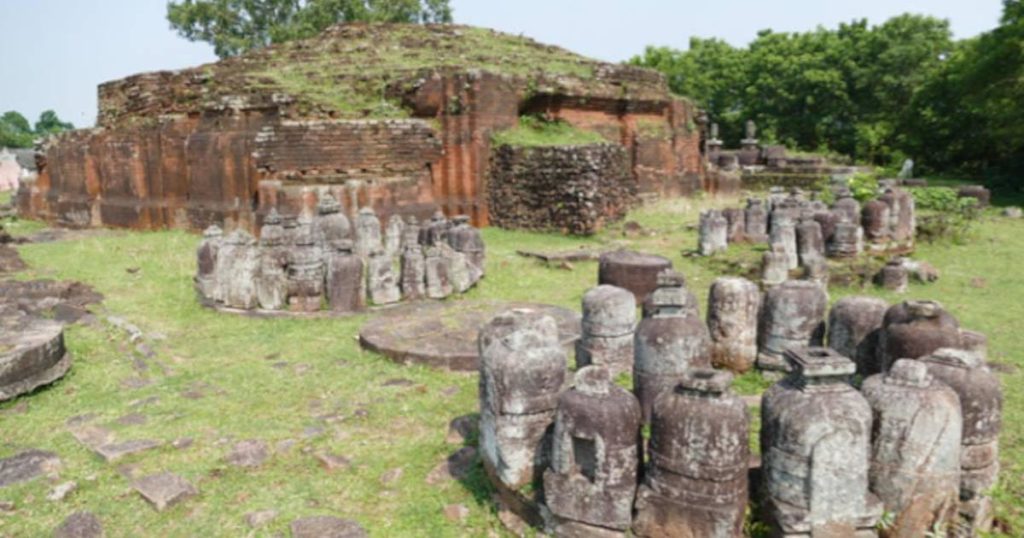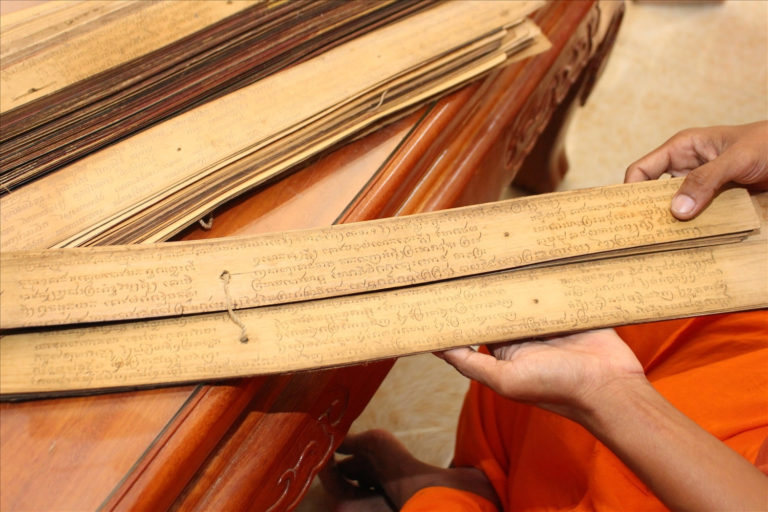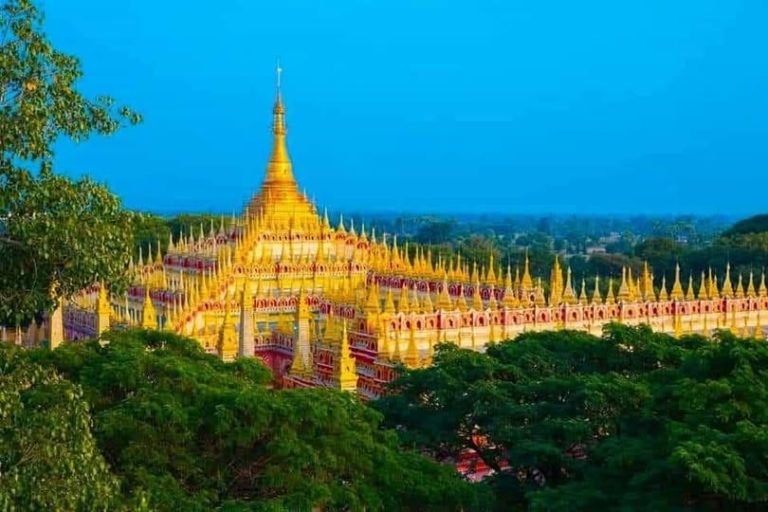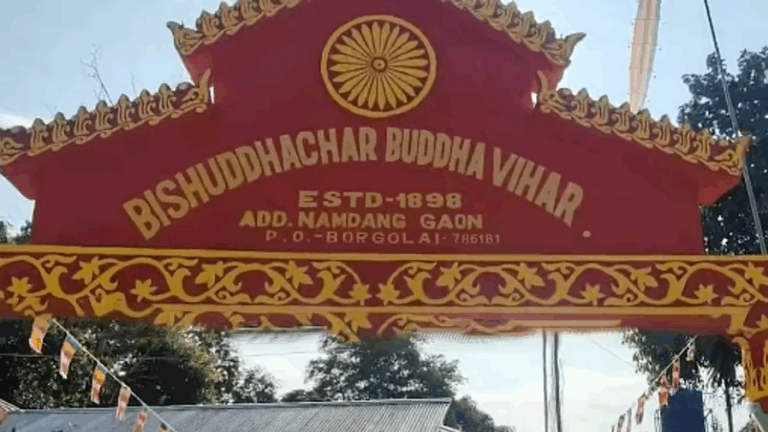A dedicated team of 50 archaeologists from the Archaeological Survey of India (ASI) has been tirelessly working at the Ratnagiri archaeological site for more than two months, carefully excavating layers of soil to reveal archaeological treasures that shed new light on Odisha’s significance in Buddhist history (Odisha is a state in eastern India). The most remarkable of these finds are three gigantic Buddha heads, which all come from the first millennium AD.

More than six decades ago, renowned archaeologist Debala Mitra, India’s first female archaeologist and former ASI Director General, unearthed two grand quadrangular monasteries, a massive stupa, a cluster of shrines, and numerous sculptures at Ratnagiri—also known as Odisha’s ‘Hill of Jewels.’ Today, along with the huge heads an extensive Buddhist shrine has emerged from a mound to the south of the monasteries, highlighting the richness and incredible productivity of this historically significant location.
Shrine Complex Plus Heads Represent a Stunning Find
The presence of Buddhist remains at Ratnagiri was first documented by archaeologist M.M. Chakrabarty in 1905. However, the first extensive excavation was not conducted until the late 1950s the site’s origins to the 5th century AD, with continuous development until the 12th century. Historians suggest that the site declined in the 13th century AD following Muslim invasions.
Before the recent excavation in December 2024, a small section of a Buddhist head and other structural remains were visible on the southern side of the main monastery. ASI’s Puri Circle initiated the excavation with the goal of determining whether a shrine complex—a sacred Buddhist assembly or prayer hall—existed at Ratnagiri. While similar shrine complexes had been discovered at the neighboring sites of Lalitgiri and Udaygiri, no such structure had previously been identified at Ratnagiri.

Shrine near Ratnagiri Buddhist Excavation. (Ankur Panchbud/CC BY 2.0)
According to ASI’s Superintending Archaeologist D.B. Garnayak, who spoke to the New Indian Express, early signs of buried remains prompted further investigation. After two months of excavation, findings now strongly suggest that the shrine complex was indeed located in this area. Supporting this conclusion is the discovery of three colossal Buddha heads with elongated earlobes and a lion pedestal. These intricately carved heads depict Buddha in deep contemplation, with an ‘ushnisha’—a cranial protuberance symbolizing wisdom, enlightenment, and spiritual attainment—adorned with rows of detailed curls.
Interestingly, the noses on all three Buddha heads remain intact, a rarity given that invaders typically damaged the noses of sculptures. Garnayak speculates that the heads were so tall that attackers could not reach the noses, opting instead to break the statues at the neck. Near the pedestal, archaeologists also uncovered a circular structure with a khondalite base, decorated with images of a serpent deity holding a ceremonial pot, a mythical lion, and floral motifs.
Significance of Ratnagiri in Buddhist History
Ratnagiri, also known as Ratnagiri Mahavihara, is among the most significant and expansive Buddhist sites in Odisha. Spanning 18 acres (7.28 ha), it is situated on the Assia hill range along the left bank of the Kelua River, a tributary of the Brahmani River in Jajpur district. The site gained recognition as a prominent center for Buddhist learning, particularly in yoga and tantra. Mitra and other historians have often compared Ratnagiri to the renowned Nalanda University.
During the 9th and 10th centuries, Ratnagiri flourished under the patronage of the Bhaumakara dynasty. Archaeological evidence from the site spans from the 5th century to the 14th century. Buddhism expert Sunil Patnaik notes that Ratnagiri’s history is marked by two distinct phases: the first 200 years were dominated by Mahayana Buddhism, while Vajrayana or Tantric Buddhism characterized the later period. It is believed that Vajrayana Buddhism from Ratnagiri spread to Southeast Asia, particularly influencing the cult of Tara in Java and Tibet during the 9th and 10th centuries.

Stump of main stupa, and smaller stupas at Ratnagiri. (Daniel Limma/CC BY-SA 3.0)
Inscriptions and Dating of Artifacts
Among the most significant recent discoveries are inscriptions on stone tablets and votive stupas, which have provided crucial dating for the Buddha heads. Previously, the datesriver of similar heads found in the 1960s excavation were unknown. The newly uncovered inscriptions, written in Sanskrit using the Kutila script, were translated by archaeologist Prof. Subrat Acharya and ASI’s Mysuru epigraphy branch director K. Munirathnam. Their analysis dated the inscriptions to the mid-7th to 8th century, allowing archaeologists to attribute the Buddha heads to the 8th century. Additionally, several 12th-century inscriptions in Nagari script were found, some containing Buddhist hymns known as ‘dharani.’
Following these discoveries, the excavation has been expanded to better understand the structures, the causes of their destruction, and the site’s pottery assemblage—collections of ceramic vessels and fragments that provide insights into daily life and culture.
Garnayak emphasized the importance of pottery in archaeology, as it reveals information about a civilization’s food habits, religion, and societal structure. Unlike the 1960s excavation, which prioritized structural findings, the current excavation focused heavily on the recovery and analysis of ancient pottery.
A large number of pottery fragments have been recovered in recent weeks, predominantly consisting of greyware, followed by redware pottery. While most shreds are plain, some feature geometric patterns, suggesting they were part of lamps, bowls, and dishes. Previously, ASI had discovered 5th- to 6th-century pottery from various sites across Odisha, but the ceramics from Ratnagiri date from the 7th to 14th centuries, connecting them to Odisha’s medieval ceramic traditions.
A particularly remarkable find is a broken monolithic elephant statue, measuring five feet in length and over 3.5 feet (1.06 m) in height. This striking structure is among the largest and most refined elephant sculptures discovered in Odisha.
Vajrayana Buddhism and Religious Iconography
Ratnagiri’s Buddhist sites were historically supported by Southeast Asian traders, leading archaeologists to investigate potential maritime connections. Although they have found a few celadon ceramic fragments—an ancient Chinese pottery style—there is insufficient evidence to confirm strong maritime ties like those found at Barabati and Khalkatapatna.
What has been uncovered in abundance, however, are idols of Buddhist deities and votive stupas linked to Vajrayana Buddhism. Nearly 50 statues of Buddhist gods and goddesses, including Tara, Chunda, Hariti, Avalokitesvara, Heruka, Marichi, Jambhala, Manjushri, Arapachana, Vajrasattva, and Vasudhara, have been excavated from the shrine complex.
In addition, hundreds of stupas—both monolithic votive stupas and structural stupas—have been recovered. Many of these feature niches housing idols of Buddha in Bhumisparsha and Dhyana mudras, as well as other deities such as Avalokitesvara, Chunda, and Aparchana. Votive stupas were typically offerings made by students or devotees fulfilling a vow. Some of the larger stupas are adorned with four deities positioned in cardinal directions.
Garnayak noted that Ratnagiri has yielded more votive stupas than any other Buddhist site in Odisha, making it an invaluable location for studying the iconographic features of Vajrayana Buddhism.
Future Excavation Plans
ASI intends to continue excavations at Ratnagiri for several more months to uncover further monastic evidence. With the site covering an expansive 18 acres (7.28 ha), there is still much to explore, and archaeologists anticipate more significant discoveries that will enhance understanding of Odisha’s astounding Buddhist heritage.
Top image: Maha-stupa at Ratnagiri Buddhist Excavation revealed 3 enormous Buddha heads. Source: Ankur Panchbud/CC BY 2.0
By Nathan Falde



